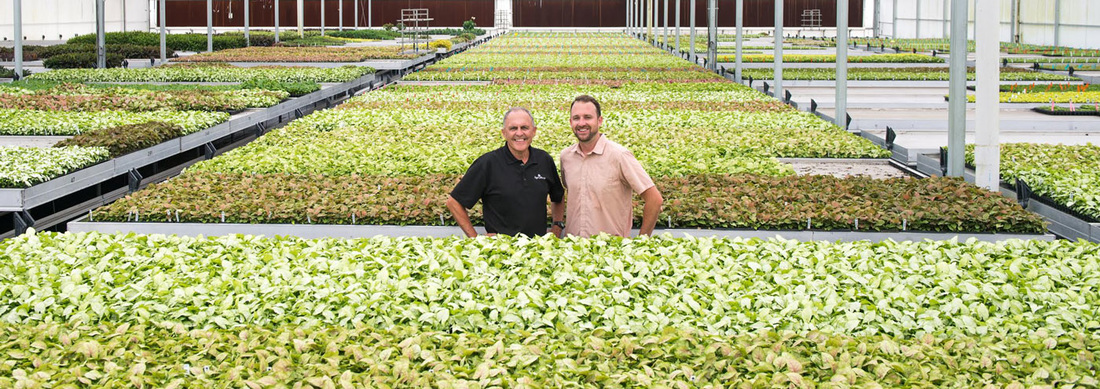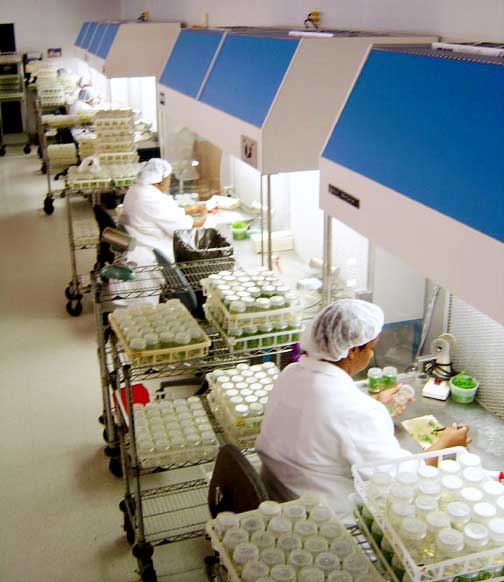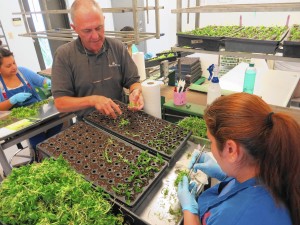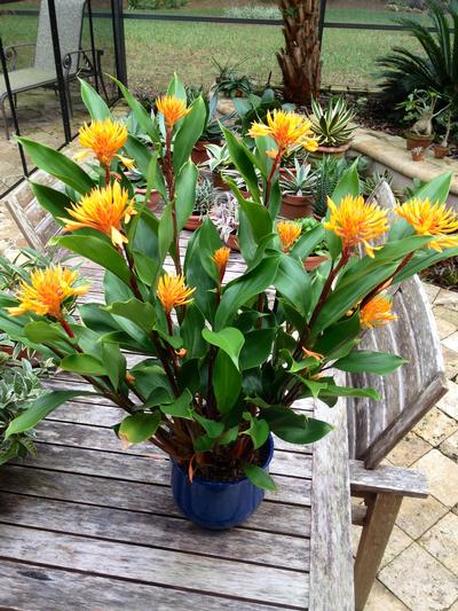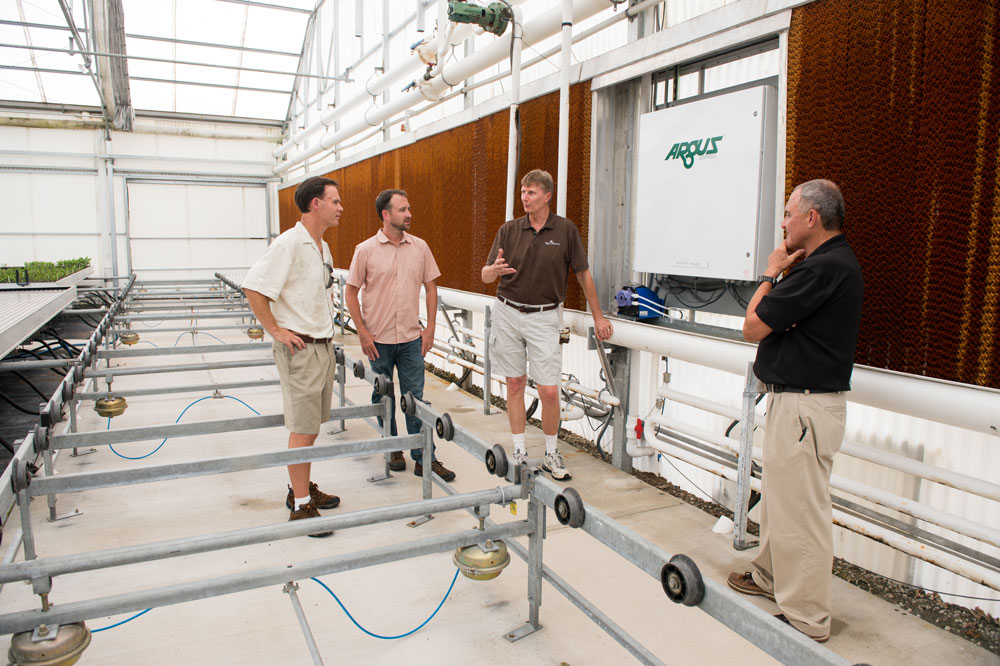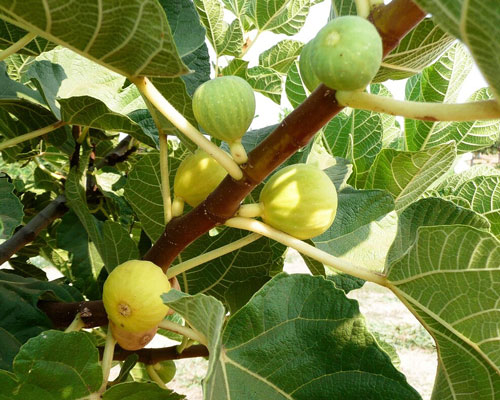the challenge: meeting investor expectationsPortrait of a First Green Bank Investor and Board Member: Randy Strode
|
“Although I am 10 years older than Ken I find myself constantly wanting to impress him because he is so passionate about in his environmentalism. We want AgriStarts to be one of Ken’s shining stars as a company.” |
Randy Strode grew up in north-central Illinois farm country and taught high school biology there for five years before deciding to strike out and see what the wider world might have to offer him. “I loved teaching,” he confesses. “But quite frankly I looked around and saw my life stretching out before me in this small town and it was not that exciting.” In 1975, sporting an Afro and bell-bottom trousers, he took off for Florida with vague intentions to save the Florida gator and bald eagle. Those ambitions were temporarily shelved when he married and took on the shared responsibilities of providing for his growing family. Good fortune shined on him when a nurseryman in Broward County who was starting up Florida's first plant tissue culture lab hired him. (These are labs that grow plant cells, tissues and organs under sterile condition.) The experience he acquired with that venture set him on the path to cofounding AgriStarts in 1984 in the Central Florida city of Apopka, Orange County. AgriStarts is today one of the world’s leading suppliers of plant tissue culture starter plants and services.
Randy developed a banking relationship with Ken LaRoe in the early years of AgriStarts when Ken was a lending officer at a local Central Florida bank. Later in 1996, when Ken approached him to invest in his first banking venture, Florida Choice, Randy signed on. Like his fellow investors, Randy enjoyed a rich return on his investment when Florida Choice was sold in 2006 to Alabama National Bancorp. “So when Ken asked me to be part of First Green Bank I didn’t think twice,” Randy recalls, “I actually thought his sustainably focused business plan this time around was even better than his first.” Ken gave all his investors a copy of the book that had inspired him to found First Green Bank—Patagonia Founder Yvon Chouinard’s Let My People Go Surfing. Randy read it cover to cover and suddenly found his latent passion for “saving the world” rekindled. |
“I felt my blood resurging,” he recalls, “and I was in a position with AgriStarts, which was by then about 22 years old, to start incorporating a lot of the principles of a responsible business that Chouinard talked about into my company’s day-to-day operations.”
|
AgriStarts employs a technique called “ebb and flood” that involves collecting and storing rainwater off the company’s greenhouse and watering from the ground up. The new system ensured that no nitrogen or fertilizers contaminate the ground or leak into the local aquifer.
|
AgriStarts began by disbanding one of the two wells from which it had been drawing water for its nursery operations, and instead began watering them “from the bottom,” using a technique called “ebb and flood.” This involved collecting rainwater off the company’s 120,000 square foot greenhouse, which yielded about 70,000 gallons of water for every inch of rain that fell. The new system ensured that no nitrogen or fertilizers would find their way into the ground or leak into the local aquifer. Today the company composts 100 percent of its organics and reuses or recycled all of its metals waste, plastic trays, and cardboard.
Randy reports that embedding a conservation ethic into the company’s workforce is an ongoing priority. “Every time we have an opportunity to have a meeting with all our 97 staff in our two locations we do everything we can to encourage them to support our recycling efforts,” he notes. Randy holds his personal accounts at the bank and AgriStarts is also a depositor as well as a line of credit customer. He reports that his association with the bank as an investor, board member, and customer has brought meaning to his life in many ways. First it has inspired him to work constantly to bring AgriStarts to the next level of regenerative practice. “One of the things I find interesting about myself,” he acknowledges, “ is that although I am 10 years older than Ken I find myself constantly wanting to impress him because he is so passionate about in his environmentalism. It is a kind of a neat thing. We want AgriStarts to be one of Ken’s shining stars as a company.” As a member of First Green Bank’s Board of Directors, Randy also enthusiastically and actively recruits new business to the bank. “As board members we are supposed to make sure all the rules and policies are adhered to and we have certainly been convinced Ken put together an enormously capable staff to do that,” he relates. “But the other part of our responsibilities is to bring business to the bank and by doing so can expose these new customers to the bank’s philosophy. |
We can have a huge influence on the people we get to take a loan out with us or invest with us. A lot of times they have an experience very much like mine when they are first introduced to the bank. It rekindles their desire to do the right thing, especially as they see the bank is doing it and that it is highly profitable.
|
There are a lot of people who can be brought into the fold with the influence that we have.”
Randy also actively cultivates a wide sphere of influence in the plant tissue industry. “We conduct many tours and we have an open door policy at our company,” he relates. “People come through and they are amazed at what is involved in producing a plant product that goes into the industry in a sustainable way. We also have many garden club members and many times they will ask for a business card to share with a relative or acquaintance and when they do I also hand them my First Green Bank card. It is my little bit of evangelism. I feel it is my responsibility as a director to expose as many people to the bank culture as I expose to my own business’s.” Among First Green Bank investors, Randy might be characterized as a “semi-patient” one. “I am 67 years old,” he relates, “And at some point — 2, 3 to 5 years — I would like the bank to sell, there is no doubt about that. I don’t think anyone who went into the bank expected it to be a local bank on into perpetuity. That said, |
I probably share Ken’s philosophy, maybe more than most, in that I really would love to think that when it does sell it will be to an entity that buys into the philosophy.”
|
Randy believes there is still a lot First Green Bank can do to deepen its presence and influence. “We could stand to have another branch or two to market our brand and philosophy,” he says, “that will take a couple of years and will only make the bank more desirable to an acquirer.”
|
more on meeting investor expectations:

Jim Gissy, VP, Westgate Resorts and FGB investor
“I like the idea that their focus is thinking about sustainability of the environment. What good will it do if the environment is screwed up? It won’t matter how much money you have.” READ MORE |
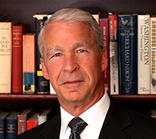
Evangelical Minister and First Green Bank Board Member Joel Hunter
"There has also been a certain amount of conflict on the board of directors and I see myself in a peacemaker role there." READ MORE |
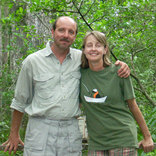
Marc and Terry Godt of Green Isle Gardens
...were not looking for short-term profit—but to make a long-term investment in their community and in a business they knew was aligned with their values—when they became shareholders in First Green Bank. READ MORE |
